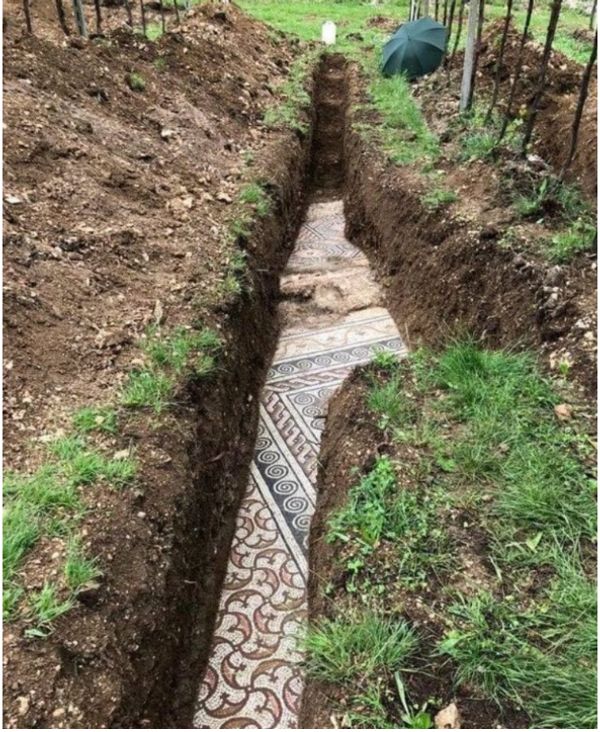
Archaeologists have made an extraordinary discovery in the hills above Negrar di Valpolicella, northeastern Italy. After almost a century of searching, they have finally unearthed the ruins of an ancient Italian villa, including a stunning Roman mosaic floor.
The mosaic, believed to be part of the same villa that was discovered in the past, features meticulously crafted geometric shapes and beautifully arranged tesserae made of marble and glass. The vibrant colors and intricate design of the mosaic are a testament to the skill and artistry of the Roman craftsmen.
This discovery holds significance not just for archaeologists, but also for the local community. It serves as a reminder of the importance of perseverance and dedication in achieving our goals. Moreover, it offers a glimpse into the rich history and culture of this particular region, inspiring future generations to continue the search for hidden treasures.
Dating back to the third century AD, the mosaic floor is currently being studied by experts and specialists. Their aim is to ensure the careful excavation and preservation of this invaluable piece of history, without compromising its exquisite layout. By unraveling its secrets, we can gain deeper insights into the lives and talents of our ancestors, further enhancing our understanding of this fascinating period.
The excavation site, which had remained untouched since 1922, is now the center of attention for the Superintendent of Archaeology, Fine Arts, and Landscape team from Verona. The discovery has garnered widespread interest after an archaeologist named Myko Clelland shared the news on social media, igniting public curiosity.
Moving forward, it is crucial for the Superintendence to collaborate with the landowners and municipality to devise the best plan for showcasing this archaeological treasure to visitors. The progress of this lengthy and costly process must be carefully monitored. By allowing access to this once-hidden part of history, we can foster a deeper appreciation for the unique culture it represents.
Thank you for taking the time to explore this remarkable discovery. We would greatly appreciate it if you could share this article with your Facebook friends. Your support is invaluable in spreading awareness of our rich heritage and helping others discover the wonders of the past.




